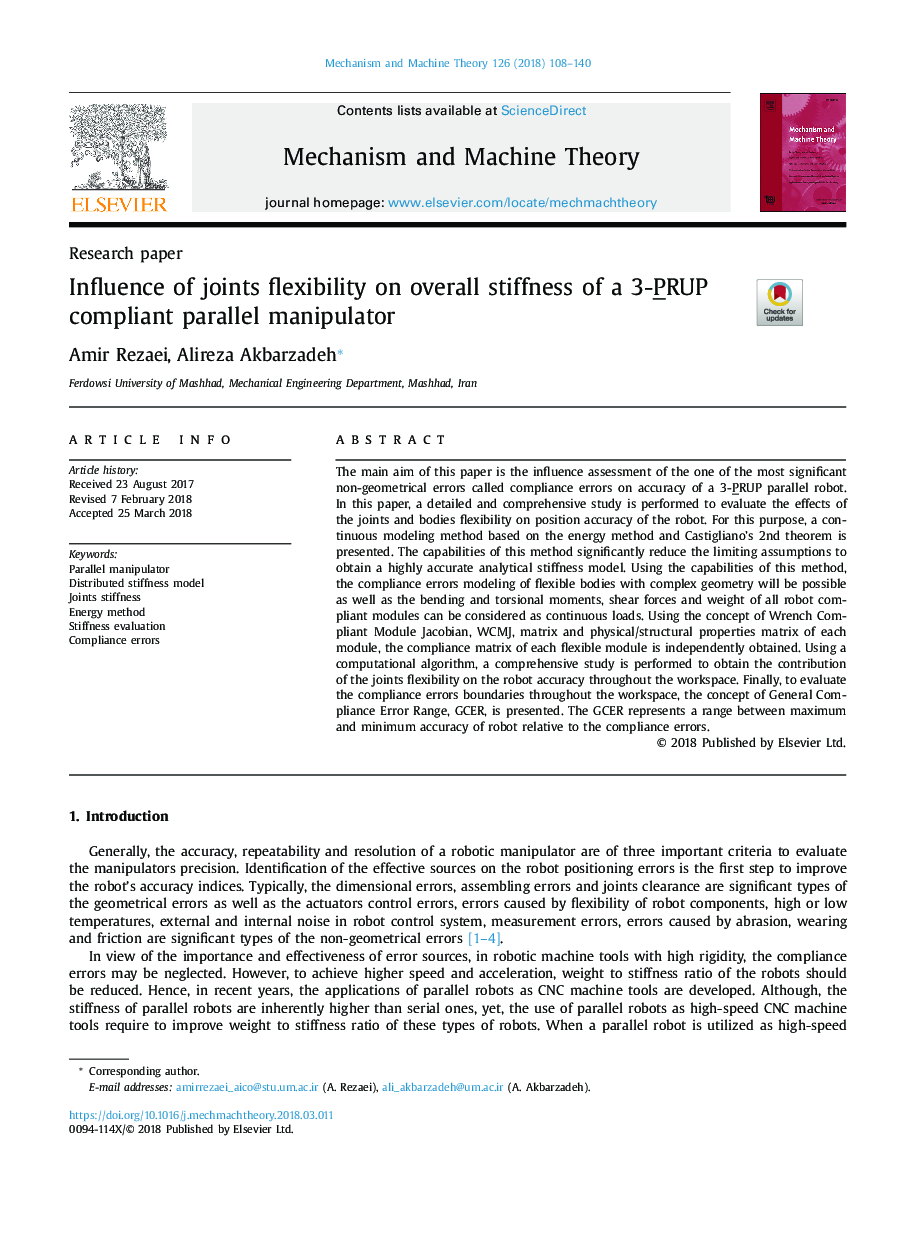| Article ID | Journal | Published Year | Pages | File Type |
|---|---|---|---|---|
| 7179043 | Mechanism and Machine Theory | 2018 | 33 Pages |
Abstract
The main aim of this paper is the influence assessment of the one of the most significant non-geometrical errors called compliance errors on accuracy of a 3-PRUP parallel robot. In this paper, a detailed and comprehensive study is performed to evaluate the effects of the joints and bodies flexibility on position accuracy of the robot. For this purpose, a continuous modeling method based on the energy method and Castigliano's 2nd theorem is presented. The capabilities of this method significantly reduce the limiting assumptions to obtain a highly accurate analytical stiffness model. Using the capabilities of this method, the compliance errors modeling of flexible bodies with complex geometry will be possible as well as the bending and torsional moments, shear forces and weight of all robot compliant modules can be considered as continuous loads. Using the concept of Wrench Compliant Module Jacobian, WCMJ, matrix and physical/structural properties matrix of each module, the compliance matrix of each flexible module is independently obtained. Using a computational algorithm, a comprehensive study is performed to obtain the contribution of the joints flexibility on the robot accuracy throughout the workspace. Finally, to evaluate the compliance errors boundaries throughout the workspace, the concept of General Compliance Error Range, GCER, is presented. The GCER represents a range between maximum and minimum accuracy of robot relative to the compliance errors.
Keywords
Related Topics
Physical Sciences and Engineering
Engineering
Industrial and Manufacturing Engineering
Authors
Amir Rezaei, Alireza Akbarzadeh,
